Decoding 'The Scream': What Does The World's Most Expensive Painting Want to Tell Us?
That spine-chilling painting everyone knows... The Scream! After learning the story behind the painting from 1893, created by Norwegian painter Edvard Munch, your perspective on the work may change. Like many other painters, Munch's life was also full of ups and downs, and challenges. Beautiful works do not come to existence without difficulties. You will be surprised when you hear that Van Gogh indirectly contributed to The Scream. Here are the details behind the world-famous painting, The Scream...
Norwegian painter Edvard Munch was walking near Oslo in 1892 when he noticed that the sky had suddenly turned blood red. He immediately returned home and created one of the most famous works of art in history. This is how the painting Scream finds its place in our lives.
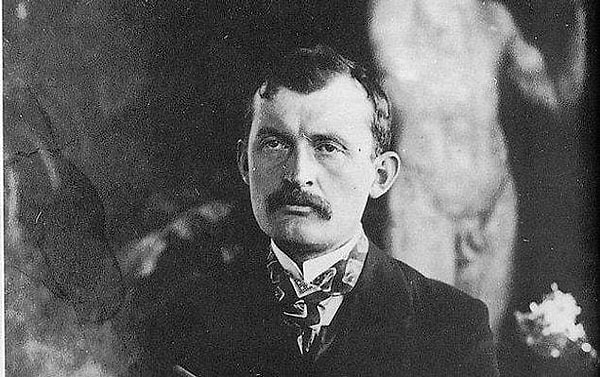
But have you ever wondered what 'The Scream' is screaming for?

Munch explains those moments and his muses as follows: 'When the sky turned red, my friends went on their way, I was so agitated that I couldn't move for a while. All I felt at that moment was the scream of nature.'
Munch's first attempt to reflect these feelings is actually Despair, not Scream. Its similar composition, characters and sky view immediately attract attention.
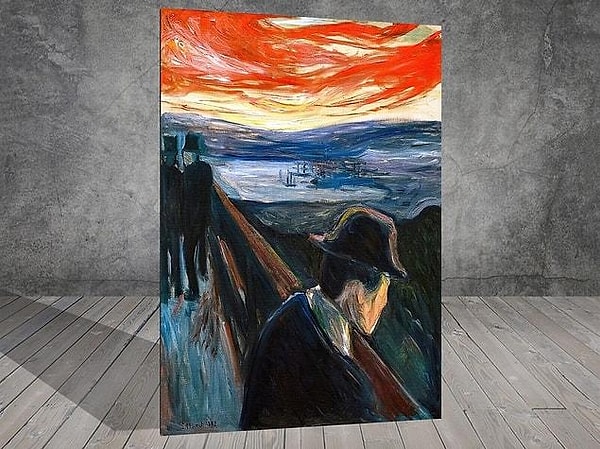
This is also a very impressive painting, but compared to 'The Scream', it is more sad than horrifying.
For 'The Scream', it's more creepy.
Over the next two decades, Edvard Munch made four more versions of 'The Scream', two in pastel, one in oil and one in lithography.
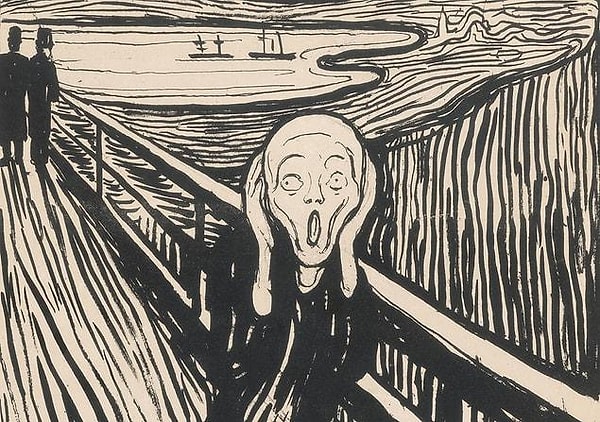
Before examining the painting in more detail, how about getting to know its creator, Edvard Munch, a little better?
Born in 1863 in Norway, Edvard Munch did not have an easy life. Having to face the death of his mother and sister at an early age, Munch's youth turned into a very difficult path with the addition of a strict father and an authoritarian upbringing.
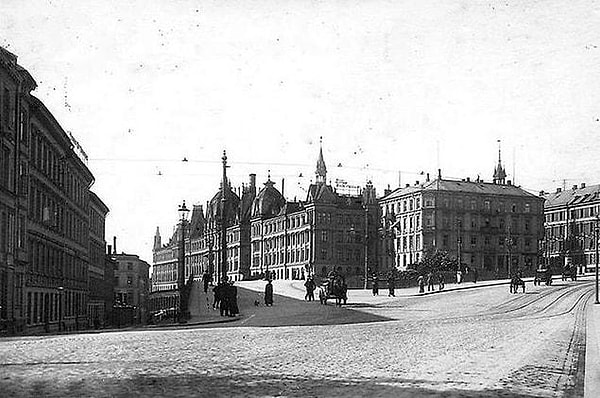
Despite his difficult youth, Munch attended the Royal School of Art and Design in Kristiania at the age of 17. He first started painting during his long illness as a child.
Although Munch seemed to be interested in the impressionism movement when he was in his early 20s, he soon changed his direction because he found what he was doing unsatisfying.

Impressionism in painting is concerned with visual impressions caused by light and color rather than the object depicted. Because of the changing weather and light, each of the water lilies of Monet, one of the pioneers of the movement, is different from the other
What Munch was looking for was more than a material thing, he was looking for an outlet for his intense emotions. Therefore, he was more interested in an artistic style suitable for the expression of the spiritual world rather than the external appearance.
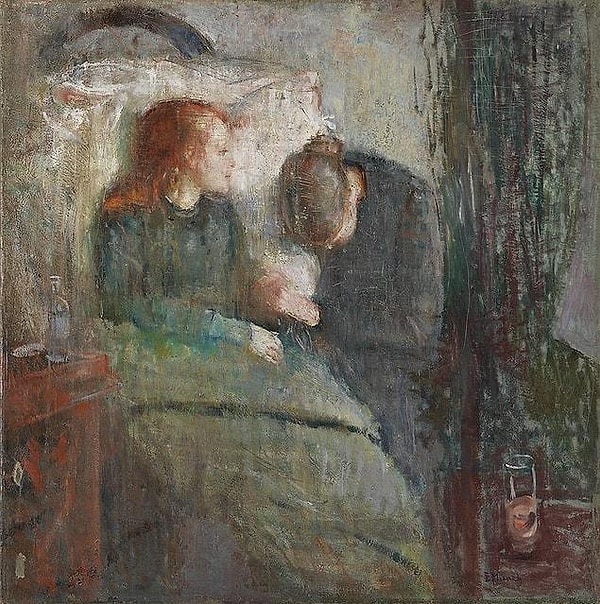
His 1886 work 'The Sick Child' is considered to be his first successful attempt to find the style he was looking for.
On a visit to Paris in 1889, Munch found what he was looking for. He found in Vincent Van Gogh and Paul Gauguin the artistic style that suited his troubled life and personal philosophy.
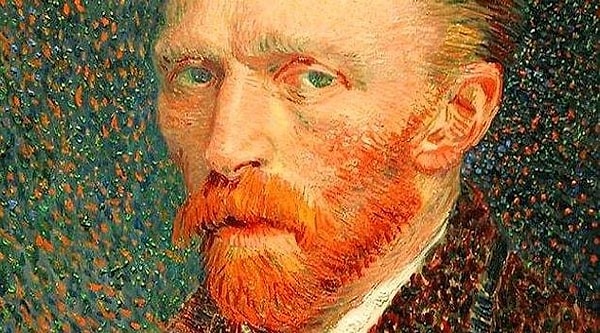
He learned from Gauguin that the world can be depicted in unnatural colors and that there is no need to depict the world as it really is.
But above all, he learned that emotions could be expressed through color.
Munch's 'Golgotha' of 1900 seems to be a clear reference to Gauguin's 'The Yellow Christ'.
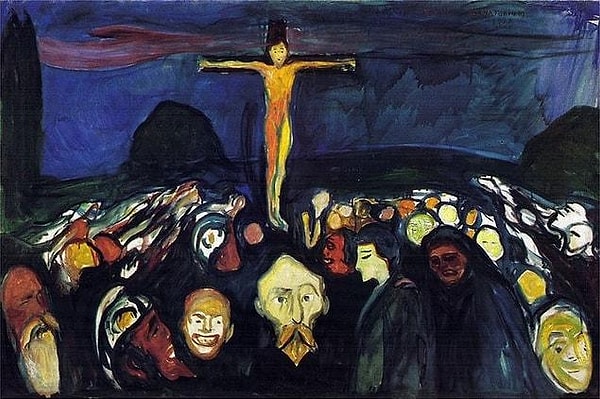
What he learned from Van Gogh's art was that the way the world looks can be shaped and changed by his emotions.
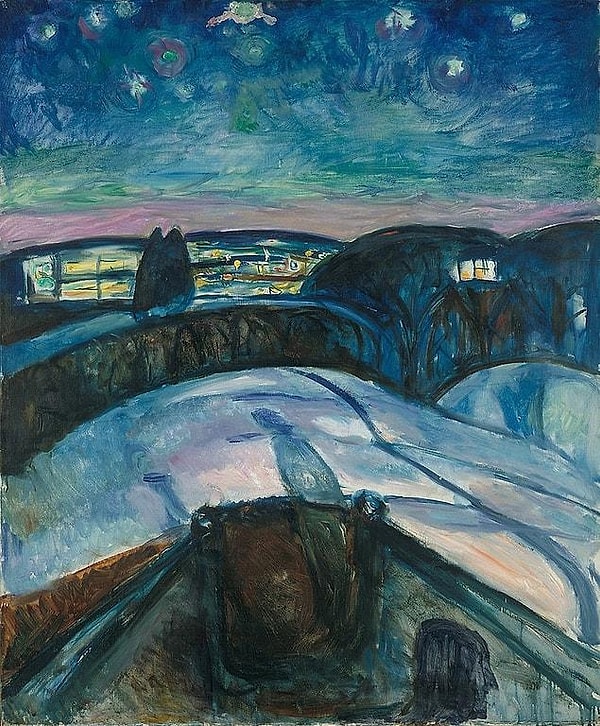
Munch made his own versions of 'Starry Night', one in 1893 and one in 1924.
Munch returned to Kristiania from Paris and created 'Melancholy' in 1891. Although clearly influenced by Gaugin and Van Gogh, Munch did much more than combine the styles of these two painters. Something completely new... The world of his art was purely psychological.
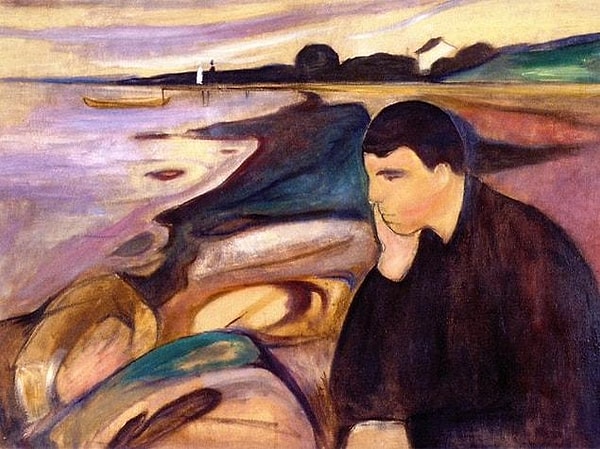
Munch simplified everything over time, focusing more and more on the power of color, allowing the human figures to become more faint. Without realizing it, he had created a style of art with more emotion than ever before. His liquid figures melted before our eyes, burning with the intensity of their emotions.

He painted several more versions of 'Melancholy', each in different colors and forms.
For Munch, the Scream represented the essence of his quest. What he painted was not something that could be seen or touched, his art was the art of the state of mind.

We can see in each of his works how unique and deeply emotional his art is.
Munch lived for another fifty years after he painted The Scream. During his lifetime, his life was full of material and spiritual troubles. But he never stopped painting.

As he painted, his style continued to evolve.
And although Munch's art was deeply personal, it nevertheless became universal.
Keşfet ile ziyaret ettiğin tüm kategorileri tek akışta gör!


Send Comment